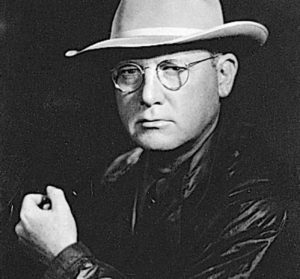
Erle Stanley Gardner is best known for his series of 86 Perry Mason murder mysteries. But this prolific writer, who was at one time known as the world’s best-selling author, got his start in the pulps way back in 1923 when he made his first of many appearances in Back Mask magazine. And even after he was a publishing sensation with his Perry Mason books and his Cool and Lam mysteries, he continued writing for the magazines, both pulp and slick. His final magazine story was published by Argosy in 1961. His book series continued until 1973 with the posthumous publishing of The Case of the Postponed Murder, three years after his death.
I have had the great pleasure of reading all the books in the Perry Mason series, and in order, to boot! I consider them to be my favorite books of all time. There’s just something about being in court with Perry Mason, watching him outwit his opponent… who was often Hamilton Burger.
It’s been a while since I read the early Perry Mason novels. But luckily, I jotted down some of my thoughts at the time. And looking at them now, I refresh my memories. Ah, wonderful memories they are, too. Let’s start with…
‘The Case of the Lucky Legs’
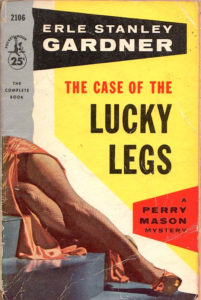
The Case of the Lucky Legs was the third in the long-running Perry Mason series. It was published in February 1934 and featured Perry, his secretary Della Street, and detective Paul Drake. No mention of Hamilton Burger or Lt. Tragg yet; they wouldn’t appear until later in the series. And this one doesn’t contain any of the courtroom scenes for which Perry Mason is best known. Bummer.
Perry Mason is hired by middle-aged J.R. Bradbury to find con-man Frank Patton. Patton had conned lovely young Marjorie Clune into coming to L.A. from small-town Cloverdale, purportedly to accept a movie contract. And Perry finds him, all right. Dead. Lying in his apartment bedroom, an eight-inch knife blade through his heart. And lovely young Marjorie Clune is most certainly the guilty party. It’s Mason’s job to prove her innocence, and prove it he does.
Several speakeasies are visited in this story. It reminds us of just how old these stories are. It was the time of prohibition; all alcohol was illegal. But Perry Mason’s not above visiting them, anyway, in the line of business, of course. Another reminder of the times is when Paul Drake mentions he tried starting his car with the starter, and when that failed, with the crank. Hand-cranked automobiles — wow, how times have changed!
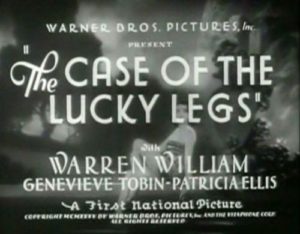
This was not only Gardner’s third Perry Mason book, but it was also (by coincidence, I’m sure) the third in the series of Warner Bros. movies about Perry Mason. It was an October 1935 release. This story was later adapted for television when Perry Mason transitioned to the small screen with Raymond Burr as the lead character. It was broadcast on Dec. 19, 1959, the 10th episode of season 3.
‘The Case of the Howling Dog’
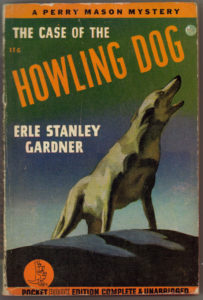
Perry Mason’s back in the courtroom again in The Case of the Howling Dog. It’s the fourth of the Perry Mason books, published in June 1934. But only the second one in which Perry goes to court. In the first and third stories, he never entered the courtroom, for some reason.
The story features Perry Mason, Della Street, Paul Drake, and Frank Everly, Mason’s law clerk. Still no sign of Lt. Tragg of Homicide, or District Attorney Hamilton Burger.
In this story, Arthur Cartright seeks out Perry Mason’s advice on a neighborhood dog that keeps him awake with its howling. Seems like a strange premise for a story. But before you know it, things blossom, and Perry’s in the middle of another murder. Cartright’s neighbor is dead; Cartright has disappeared; and Cartright’s wife, who was posing as the neighbor’s wife, is accused of the murder. Yeah, it gets a bit confusing…
It has a surprise ending, different from anything I can remember reading in any other Perry Mason book. I won’t go into details; don’t want to spoil it for you. But let’s just say that this is a “must read” book.
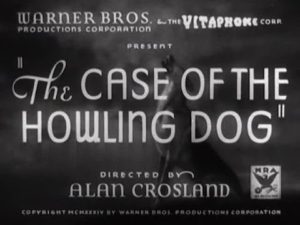
When Warner Bros. Pictures decided to create a series of Perry Mason movies, this is the one they chose to start with. It hit the screens in September 1934, mere months after its initial publication in book form. And as with most Perry Mason novels, this one was adapted for the small screen when Raymond Burr took the series to television. It aired on April 11, 1959, as part of the second season.
Every Perry Mason book is a good one. You won’t find a dud in the bunch. Pick one — any one — and read it. But keep in mind that if you pick The Case of the Howling Dog, Perry does something there that he never, ever, does in any other story. It’s definitely worth reading, but maybe not as your first Perry Mason book. You might jump to the wrong conclusions.
Jumping to the wrong conclusions is something of which Perry would never approve.


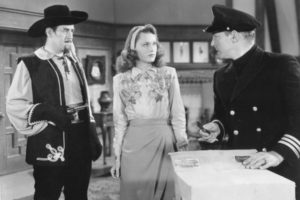
I have to agree with your assessment of the fourth Perry Mason book. I was surprised when he [spoiler] and was totally stunned when he [spoiler] and could not believe that he [spoiler] the [spoiler] and with the [spoiler] dog.
Certainly a must-read, especially for fans of the straight-laced Perry Mason of the TV series.
And for those of you who have read Joe’s comment and wondered about the [spoiler], you should read the book, or watch the movie, or [spoiler]. Personally, I recommend reading the book. But [spoiler] can be a lot of [spoiler].